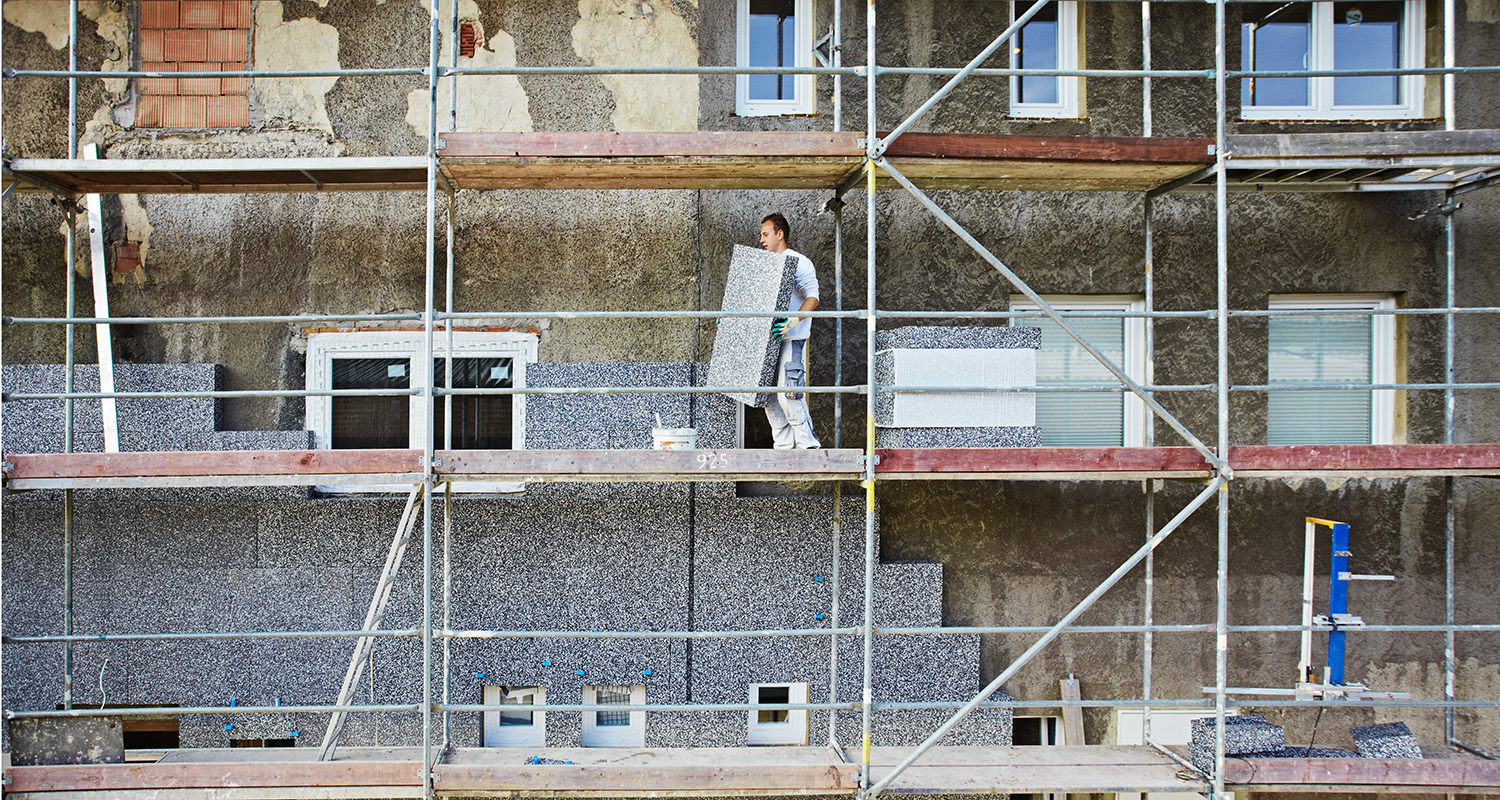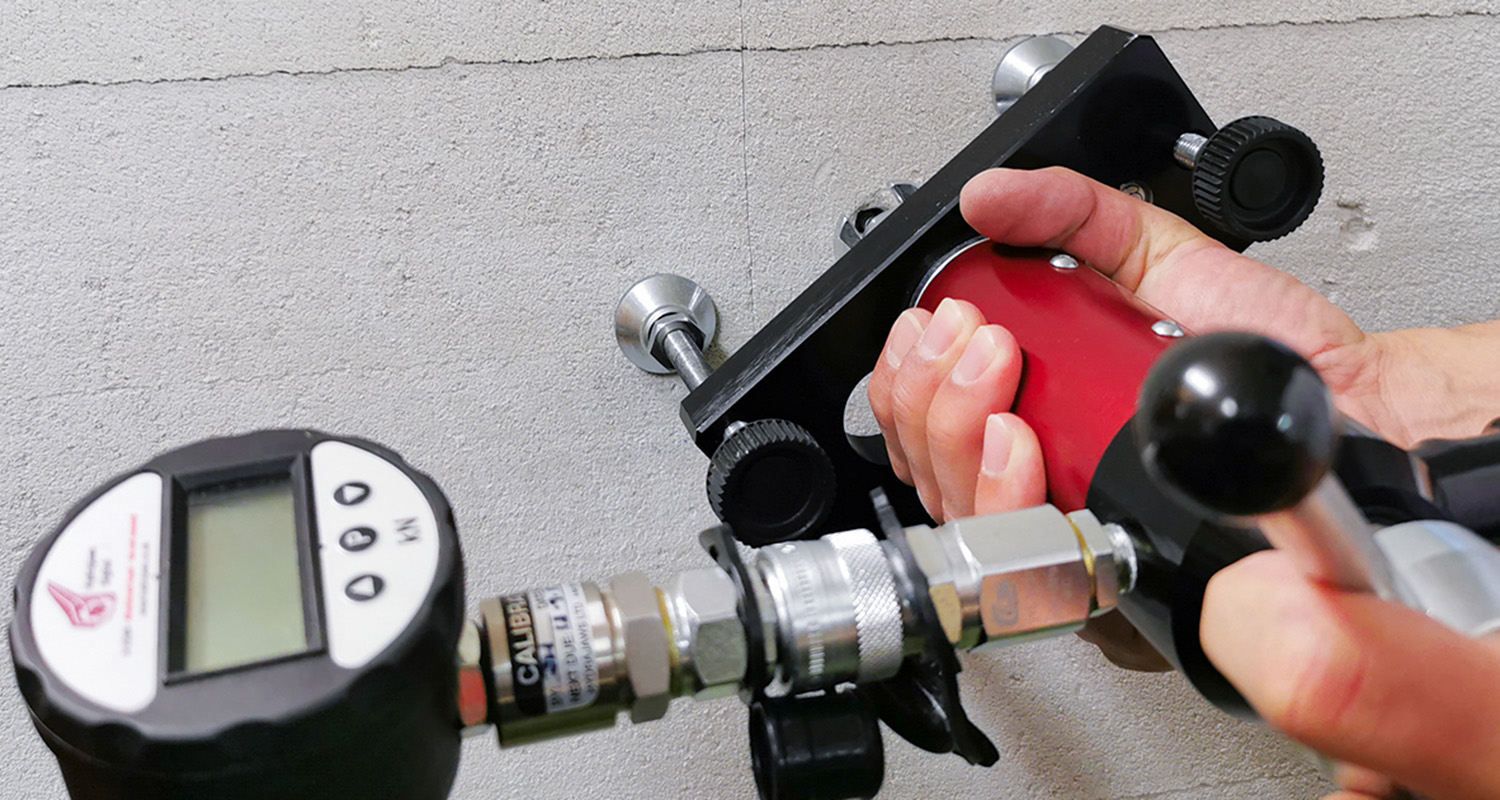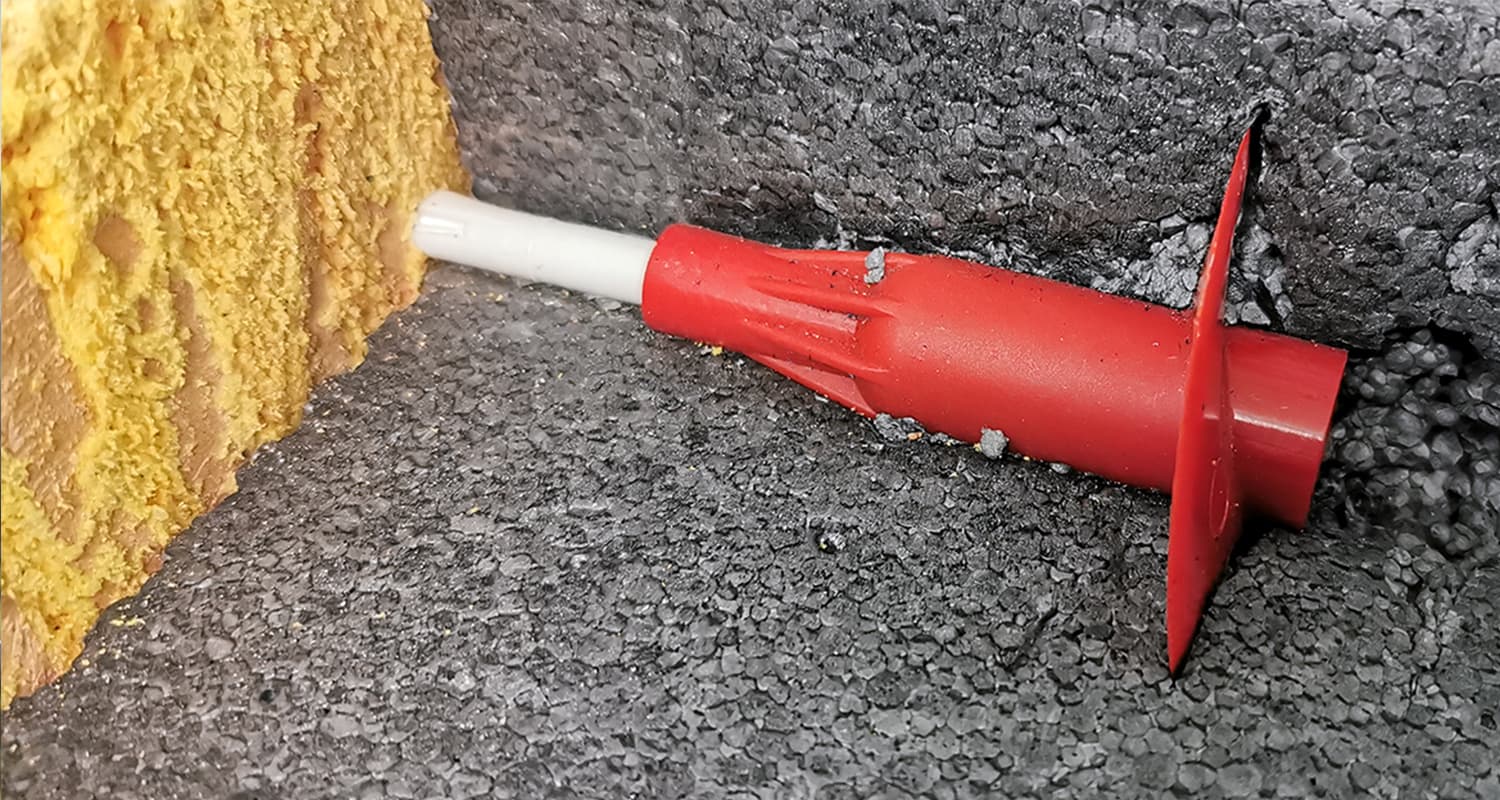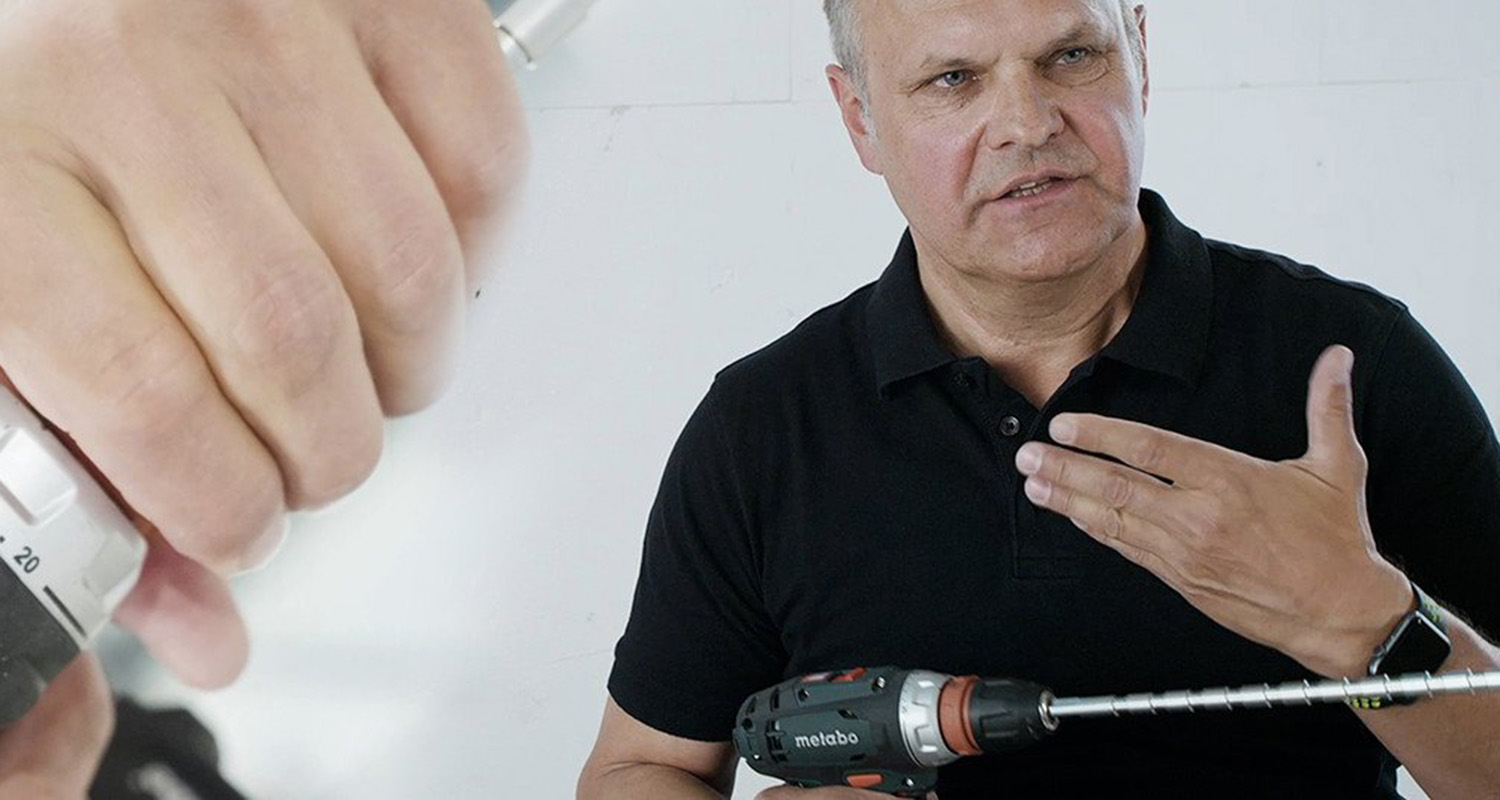Fastening external thermal insulation composite systems with rails? That’s in the past. Stricter national technical approvals have made the installation more expensive. “There are definitely better solutions around now,” says Markus Fröwis of FRÖWIS Fastening Systems, thinking not only economic efficiency.
An external thermal insulation composite system (ETICS) always consists of individual components adjusted to each other. In addition to gluing and doweling of insulation boards, for substrates that are not suitable for gluing or for substrates with high unevenness, purely mechanical fastening systems are also used today.
In the 1980s and 1990s, mainly the ETICS rail system was used for substrates that are not load-bearing: The insulation material boards were fastened with retaining and connecting rails made of PVC or aluminium which were anchored every 30cm into the substrate using special collar dowels. This way, uneven surfaces of up to 3cm/m could be balanced by lining the retaining rails using spacers.
A highly common phenomenon of older ETICS rail systems: The individual insulation boards tend to demonstrate quilted pillow effects, which means the insulation boards concavely bend outwards. This way, the insulation board joints are outlined against the exterior rendering. The contours of the insulation boards are clearly visible, regardless of the weather conditions, whether dry, wet, warm or cold.
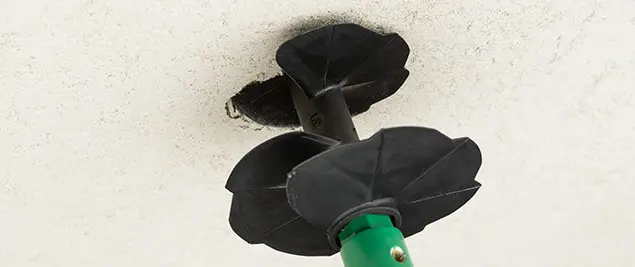
As a consequence of this obvious flaw the technical approvals of rail systems were extended to include a 20% adhesive area: The adhesive mortar is applied on the insulation board point-by-point and stripe-by-stripe, respectively, and in a later step secured with a plate dowel.
The new approval modified the rail system from a purely mechanical to a glued and doweled system. Installation became substantially more elaborate and costly, and according to the technical approval limited to a stable, even, dry and load-bearing substrate.
The Stellfuchs fastening system, on the other hand, is purely mechanical. Its advantage is firstly the higher economic efficiency and secondly the higher execution quality: The experience in the last 20 years has shown that the Stellfuchs is easier and quicker to install than the rail system, and that it does not lead to dowel marks or unsightly pillow effects at a later time.
The purely mechanical Stellfuchs fastening system is a true trouble-shooter when insulation boards cannot be glued to a substrate. The Stellfuchs manages both old and new buildings with unstable, uneven and no longer load-bearing substrates.
On old masonry and concrete, with or without render, depending on regional building regulations, the use of flame-retardant insulation materials is usually permissible up to the high-rise building limit. The economical Stellfuchs fastening system is also used especially for façade insulations on objects that are not suitable for gluing, or the rendering of which is no longer load-bearing and would have to be chipped off at great expense..
Author: Markus Fröwis
Discover now: More information about the Stellfuchs fastening system
